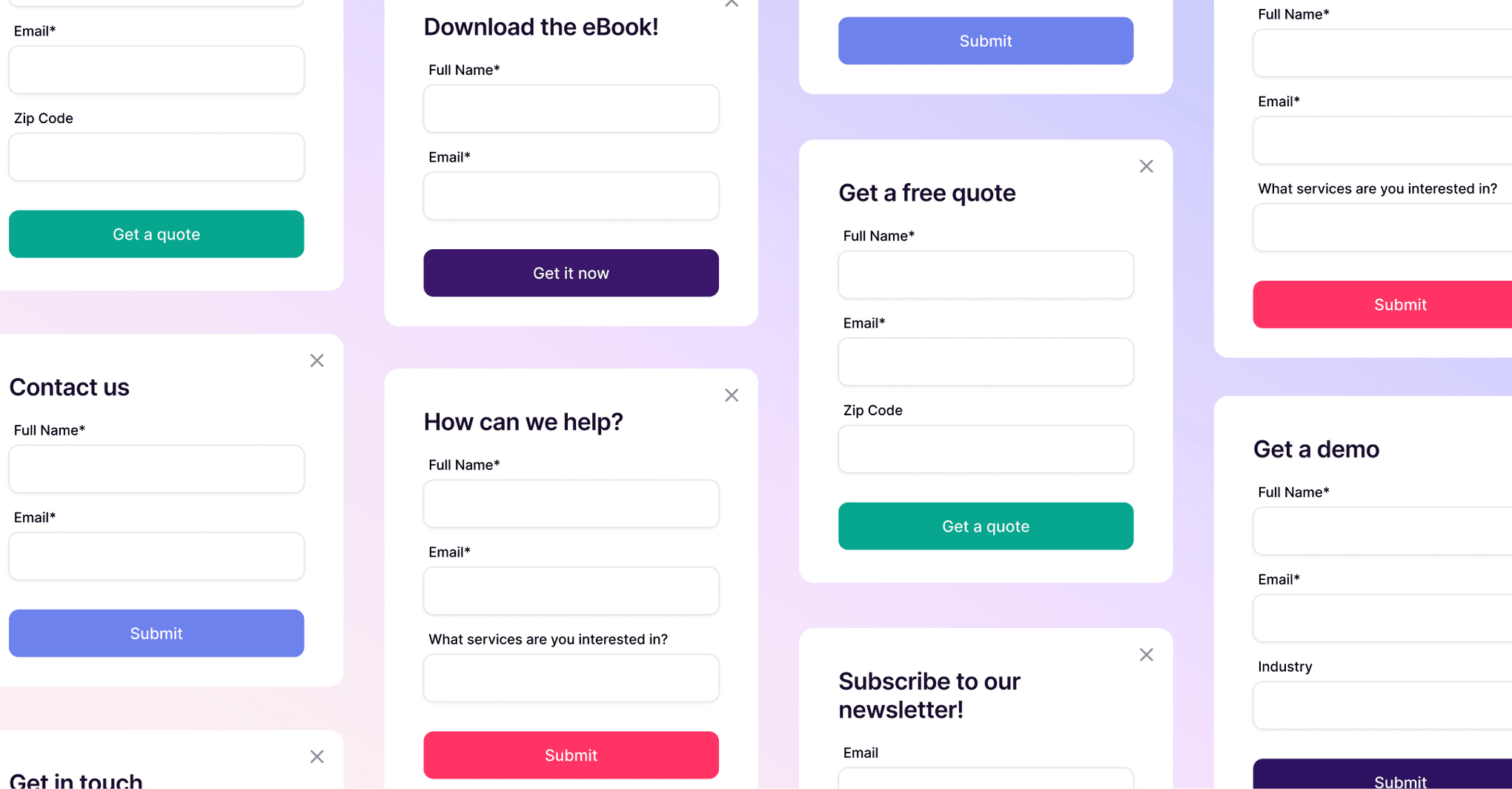Katrina Oko-Odoi
Sr. Content Marketing Manager
If you’ve worked in a customer-facing role — whether as a sales person, customer success specialist, marketer or sales leader — then chances are the old adage, “we are what we repeatedly do,” rings true. Repeatable, well-defined processes are super important to fostering success for your team.
Your business processes, which can be captured in a customized workflow using a client relationship tool like Copper, show your team exactly what action needs to be taken when to keep things on track and moving forward.
Whether you’re responding to customer support tickets or tracking service delivery for a client engagement, staying on top of these critical processes in a visual, pipeline structure keeps everyone on the same page and makes it easier for all your team members to collaborate.
It’s similar to when you’re tracking a sales process, which is captured in your sales pipeline structure and shows you and your sales team exactly what opportunities and deals to focus on and when.
Even if you already use a client relationship tool or CRM system, it’s important to customize your non-sales and sales pipelines to match your business’s unique workflows and sales processes. Because without a custom pipeline, it’s tough to accurately visualize and manage your most critical workflows and sales opportunities across the entire team.
Using pipelines to track your critical workflows
Imagine packaging your most-repeated workflows across the client journey and turning them into visual pipelines for easy tracking and collaboration. That’s exactly what you can do with Copper’s enhanced pipeline templates. With pre-built pipeline structures available for a wide range of workflows, it offers more visibility and accountability for your team — so critical steps don’t get missed and you stay on top of important relationships.
Think of it as a visualized workflow with different stages that your team moves through as you complete steps in a client-facing process. Tee it up with the necessary details, tag in collaborators, and assign tasks so everyone knows what they’re responsible for. As things move forward, easily drag the card into the next stage to keep the whole team up to date.
The beauty of this feature is that it can be applied to pretty much any workflow your business needs to track. But to make things even easier, we’ve pre-built templates for some common use cases we see our customers using over and over. These include:
Account renewal
It’s much less expensive to keep a current customer than it is to close a new one. Creating a custom pipeline to track account renewals can have a big effect on the bottom line for many businesses. Oftentimes, renewals are left to the last minute or forgotten completely, leading to lost business. With a pipeline in place, you can automate the renewal reminder process to make it as smooth as possible for both parties. Try this:
Open Renewal → Engaged → Proposal Sent → Negotiation → Closing
Partnerships
Securing partnerships or sponsorships can be critical to businesses in sectors like media and entertainment. Track the entire process with this structure:
Prospect → Meeting → Proposal Sent → Negotiation → Closing
Projects
Map out and track your client projects so you have crystal-clear oversight into your team’s activities and tasks while ensuring client work stays on track. Here’s how a projects pipeline might look:
Not Started → In Progress → Done
Service Delivery
After you’ve onboarded a new client, it’s time to get to work. Depending on your business, this often involves working closely with your client throughout the service delivery process. Start with these stages and modify as needed:
Not Started → Client Kickoff → In Progress → Client Review → Done
Recruitment
Recruiting for new team members is a critical process, and it’s important to carefully monitor every candidate that moves through your recruiting workflow. Try this structure for recruiting candidates:
Qualified → Initial Screen → Interviews → Offer Made → Closing
Onboarding
Once a new client or customer signs the contract, it’s time to get them set up before kicking off your work together. Try this pipeline structure:
New Customer → Initial Meeting → In Progress → Completed
Customer Support
When it comes to customer success, staying on top of every ticket is critical. With a customer support pipeline, you can track each customer request individually and move it through each stage to keep the status updated. Start with this structure:
New → In Progress → Customer Follow-Up → Resolved
Investor
Smart investing requires due diligence. A custom pipeline can help track investment from researching through successfully closing a deal:
Prospect → Initial Meeting → Due Diligence → Term Sheet → Closing
Why you should customize your sales pipeline structure
We're loving customizable pipelines for workflows that fall outside of sales, but what about sales pipelines?
Even if your sales pipeline stages are close to the 4 common stages — (1) prospecting, (2) qualifying, (3) proposing and (4) closing — building a customized sales pipeline structure can help you conquer some of your sales team’s biggest challenges.
Whether you’re establishing sales stages for the first time or refining them after a few years, creating a custom sales pipeline structure can help you address two of the most common challenges for sales leaders:
- Managing sales activities properly: No sales leader wants to micromanage their sales reps’ time. Without a clearly-defined sales pipeline to track opportunities, though, you can’t give your direct reports the guidance they need to focus their time and energy effectively.
- Understanding the numbers: Knowing your pipeline value is important, sure. But it’s also important to track the movement of opportunities through the sales stages. With a repeatable process tailored to your unique business, you can track conversion rates — or how often opportunities move to the next stage. This information can help you strategically change the process and better coach your sales team.
Above all, sales stages need to be clear and comprehensive. Too many stages might be overwhelming, but with too few stages you could lose out on critical insights. Whatever the solution is, the goal is to empower your sales people with this process, not make them feel burdened by it.
12 custom sales pipelines ideas
Stepping outside the traditional “prospect-qualify-propose-close” structure can be difficult. That’s why we’ve put together twelve sales pipeline stage ideas that any sales manager can use to craft the right pipeline in their CRM system. In fact, these ideas go beyond sales to new customers, including ideas for managing renewals, investments and projects:
Building and construction sales stages
Taking a new construction project from concept to contract requires close control over dates, design revisions and changing prices. Your sales pipeline should reflect the most important stages to see where the red tape is slowing things down. Here’s one way to assemble a construction sales pipeline:
Initial Scope → Quote Development → Quote Delivered → Contract Signed
Consulting sales stages
Businesses that offer consulting services need to see how well they’re scoping projects and where proposals may be struggling during negotiations. Here’s how we recommend tracing the consulting sales process:
Initial Scope → Proposal Delivered → Negotiations → Commit
Real estate selling stages
Representing a seller in real estate requires a specific sales pipeline unique to this type of highly regulated transaction. Here’s one way to structure your pipeline:
Discussion → Exclusivity Signed → Listed → Offer Received
Real estate buying stages
On the flip side, realtors or real estate companies that are representing a buyer also need to manage this unique and complex process. Here’s our recommended pipeline structure:
Exclusivity Signed → Searching → Offer Submitted → Offer Accepted
Creative agency sales stages
Creative agencies are always being asked to provide quotes for projects. Having a repeatable sales process can ensure proposals don’t end up in the void and follow-ups don’t slip through the cracks. Try this structure:
Project Discovery → Scoping → Proposal → Negotiation
New business stages
Curating new business doesn’t always end with a signed contract. Some sales leaders may want to track the early stages of new business acquisition more closely. Here’s one way to do this:
Demo Booked → Demo Held → Consideration → Verbal Commit
Simplify how you track your critical workflows and sales pipelines with Copper
Take your customer-facing workflows and sales stages to the next level with Copper, a comprehensive client relationship system for engaging clients at every step in the journey. Manage your entire team in one place and monitor your progress and team performance in real time.
If you’re looking for a tool that makes customizing your pipeline easy, look no further than Copper. Create customized pipelines with our simple drag-and-drop interface. Add as many stages, team members and activity types that you need to make it your own. Try Copper free for 14 days, no credit card needed.






